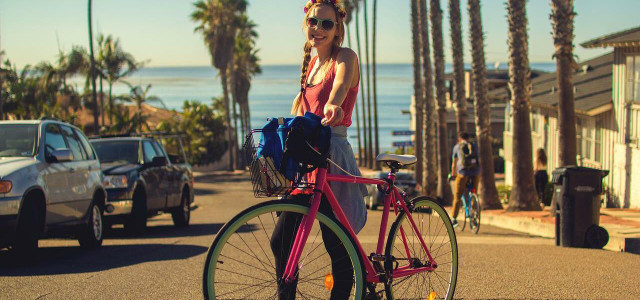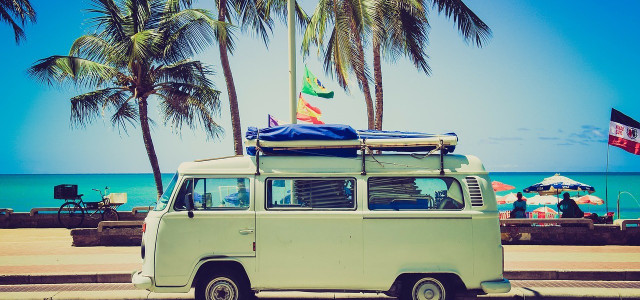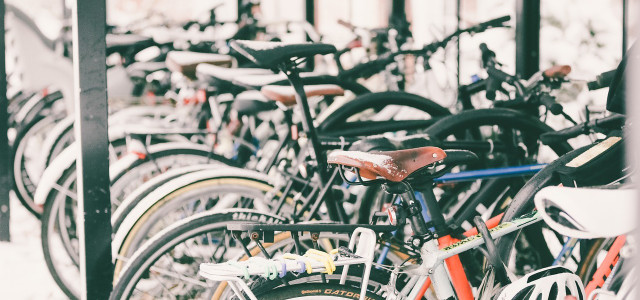Tired of the pain at the pump? Travel by bike is sustainable way to exercise, save money, and reach your destination. Start your cycling journey with the following tips.
As summer approaches and gas spices soar, you may be looking for a way to save money while also cutting down on your carbon footprint. Whether trying to get from point A to B or simply looking for a way to enjoy the outdoors, traveling by bike offers an excellent alternative to car or public transport. Here are some of the main benefits to biking this summer:
- It’s a great cardio workout to burn fat, strengthen heart and lungs, and sculpt muscles (especially legs).
- It improves mental health, stress, sleep, focus, and even posture.
- It’s low impact, so it is less likely to cause or exacerbate injuries.
- It’s sometimes a faster way to commute, especially if you rely on public transport.
- It lowers your transportation carbon footprint by 69 percent compared to using your car.
- You can save on gasoline.
1. Get a Bike
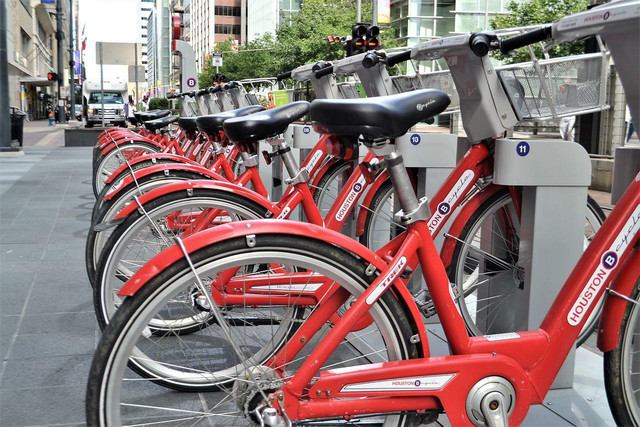


The most essential part of incorporating cycling into your routine is to purchase a bicycle. There are many different bike types ranging from $100-$3000 for different needs:
- Road bikes are light and built for speed, but do poorly off of pavement.
- Mountain bikes are bulkier, have a better suspension, and have adjustable gears for uphill terrain.
- Touring bikes are built for long distances are often the most expensive and well-equipped bikes.
- Cruising bikes are light, simple, and comfortable for casual and slow biking.
If you don’t plan on taking long or regular bike trips, you may not even need to purchase a bike, but can opt to borrow one from a friend or use a city bike sharing program. Regular or long distance biking will require a higher quality bike however. When choosing, remember that a properly sized bike should have its top bar about an inch below your crotch level.
2. Maintain Your Bike
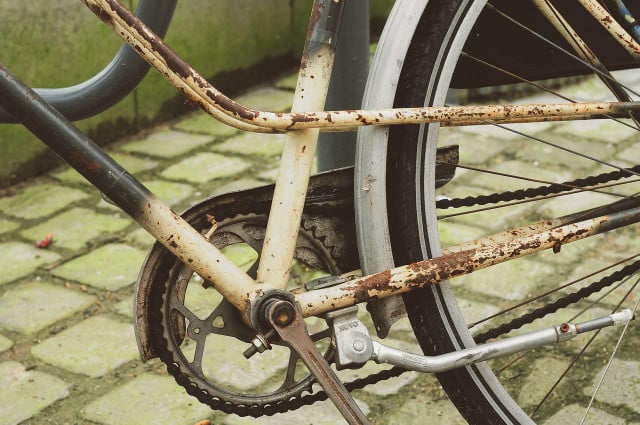


Owning a bike means learning to care for it. Poorly maintained bikes not only ride slower, but they can be more dangerous and expensive to repair down the line. Here are some tips for basic bike maintenance:
- Keep the chain clean and well lubricated.
- Make sure tires are fully inflated.
- Adjust and replace brakes when needed.
- Keep nuts and bolts tight.
3. Plan Your Route
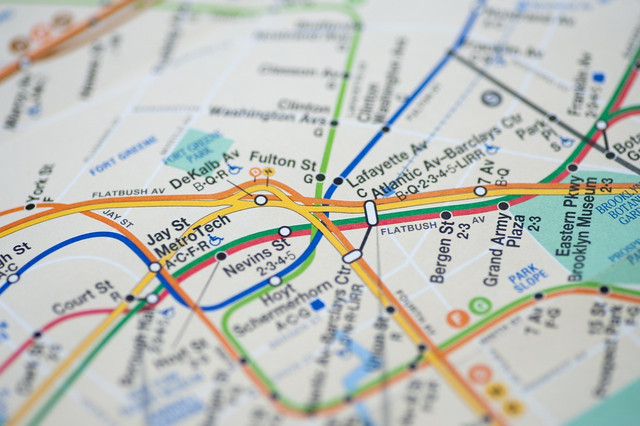


When traveling by bike, planning your route beforehand is essential for speed, safety, and comfort. Here are some tips for that perfect bike route:
- Use sites such as Komoot or Bikemap, which list both scenic and practical bike routes.
- Focus on side-streets instead of highways to avoid potentially dangerous traffic.
- Consider lodging, food, or repair shops along your route.
- Avoid rigid schedules and give yourself plenty of extra time to reach your destination.
- Get a phone mount, such as the one by Roam (available on Amazon**), so you have your map ready rather than digging into your pocket for your phone.
4. Know Your Region
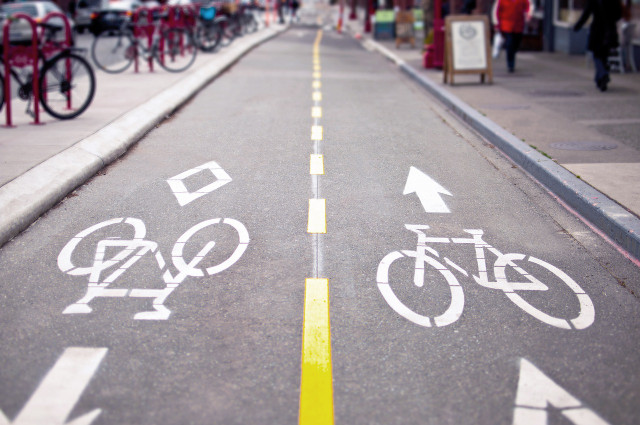


Generally speaking, the northern and coastal US (especially the Pacific Northwest) has better biking infrastructure as well as more agreeable weather than the south, where heat and humidity can be a turn-off. Cities such as San Francisco, Denver, Portland, Minneapolis, Seattle, and New York are consistently ranked as being the most bike friendly based on bike-sharing programs, bike lanes, and repair shops. That being said, rural and suburban biking can also be a viable mode of travel all over the country provided that the roads are well paved and traffic is not heavy.
5. Mind the Weather
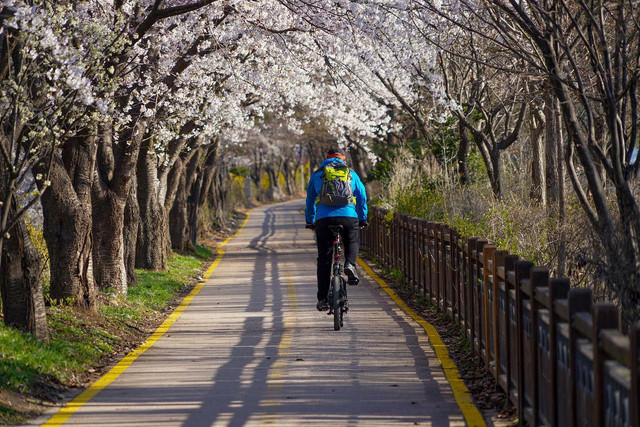


Biking during the San Diego summer comes with different weather considerations than Washington D.C. in winter. Be sure to check the weather before you travel by bike to determine what you should wear and pack. In hot weather, bring sunscreen, sunglasses, or even a light jacket to shield yourself from the sun. For cooler weather, bring light layers that you can take off if you get too warm. In winter, never forget gloves or a balaclava to protect yourself from blasts of cold air. If you are comfortable with cycling in the rain, then install fenders on your bike to keep mud from flinging.
6. Bring Water and Food
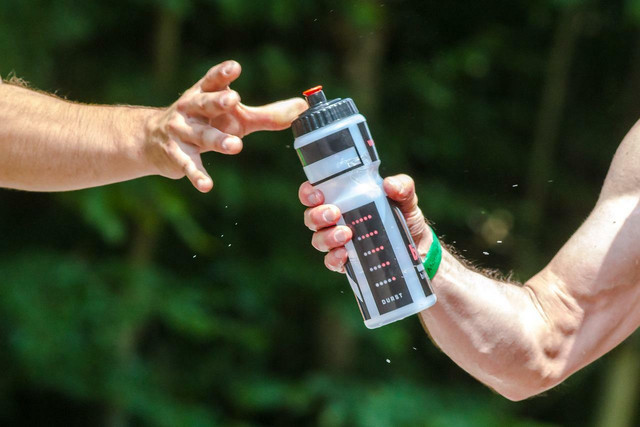


Biking is a demanding physical activity where you can expect to burn nearly 100 calories every ten minutes. This means you need ample fuel to keep yourself going. Bring plenty of water to stay hydrated as well as some carb-rich snacks for a shot of energy. Simple and portable foods such as no-bake granola balls, 3 ingredient energy bars, or homemade Gatorade are ideal when traveling by bike.
7. GearUup



You may think helmets are just for kids, but it can save you from a potentially life threatening head injury, especially when traveling long distances by bike. In fact, nearly 50 localities in the USA require helmets by law. In addition to safety, other accessories can help making your ride smoother:
- Bike lock to prevent your bike from being stolen. Try to wrap around your frame as well as wheels.
- Bell to alert pedestrians when you’re coming their way.
- Rear rack or bike bags can provide extra storage while taking literal weight off your back.
- Mirrors to let you know when cars or pedestrians are behind you.
- Phone mount to keep your map handy.
- Bike multitool for emergency maintenance, available on Amazon**.
While it’s always better to be over-prepared, avoid overpacking non-essentials. Each extra pound of weight you bring will mean more effort for you when pedaling.
8. Get Comfortable
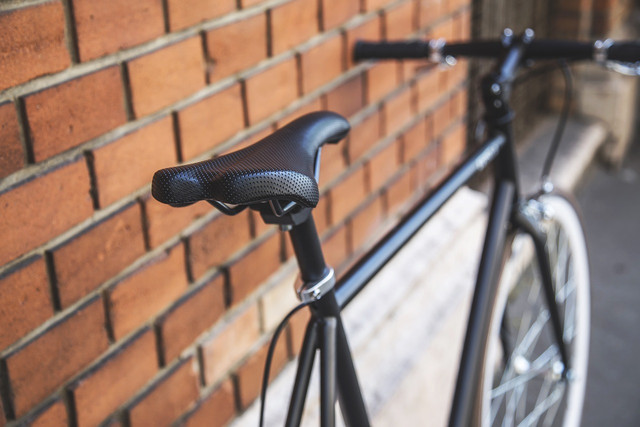


A proper bike seat can mean the difference between a smooth ride and rear-end suffering. The height of your bike seat can also improve efficiency, posture, and help avoid injury. A good rule of thumb for setting the height is that the your leg should be straight when at the 6:00 position. For comfort, consider purchasing a padded bicycle seat or even padded bike shorts.
9. Learn Biking Etiquette
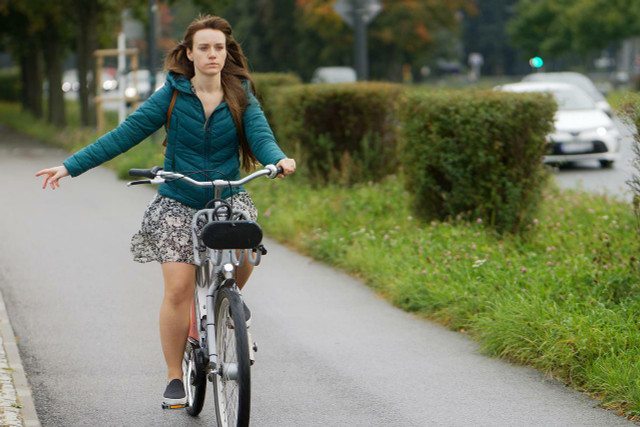


You may think it’s as simple as riding a bicycle, but traveling by bike comes with its own set of rules to follow:
- When available, always use bike lanes.
- Avoid sidewalks, which often have obstacles such as pedestrians or their pets. Use the shoulder of a road and don’t be afraid to take up an entire lane, which is your right as a cyclist.
- Drive with traffic, not against.
- Always use hand signals when turning and ring your bell when passing to alert cars or pedestrians.
- Be aware of your surroundings, particularly in areas of high car or pedestrian traffic. Mind parked cars in case a door opens in front of you.
- Be visible and predictable. Give other road users plenty of space.
- Avoid looking at your phone or listening to music; these can distract you from the road.
10. Make a Budget



Casual bike riding requires little budgeting, but regular bike commuting and long distance travel by bike requires more careful financial planning. Here are some considerations when budgeting:
- Decide on a bike to fit your needs. For short or infrequent trips, you may want to use an electric city bike, rent a bike from a shop, or ask to borrow one from a friend. Second hand shops often can also offer cheap and quality bikes. For regular and long distance biking, high quality bikes can cost upwards of $1000.
- Unlike renting or borrowing, owning a bike requires maintenance. An air pump and grease for the chain will help make your bike last longer while other tools can be brought as they are needed. Learning to fix your bike yourself will always be cheaper than sending it to a repair shop, but will also require necessary tools.
- Budget for food and lodging. Bringing your own food and tent will be much cheaper than stopping at restaurants and hotels, but will also weigh much more.
Read more:
- The 9 Best Eco-Friendly Summer Activities For Adults
- The 10 Greenest Cities in the US
- 10 Green Tips That Will Make Your Everyday Life More Sustainable
Important Information regarding Health-related Topics.
** Links to retailers marked with ** or underlined orange are partially partner links: If you buy here, you actively support Utopia.org, because we will receive a small part of the sales proceeds. More info.Do you like this post?






